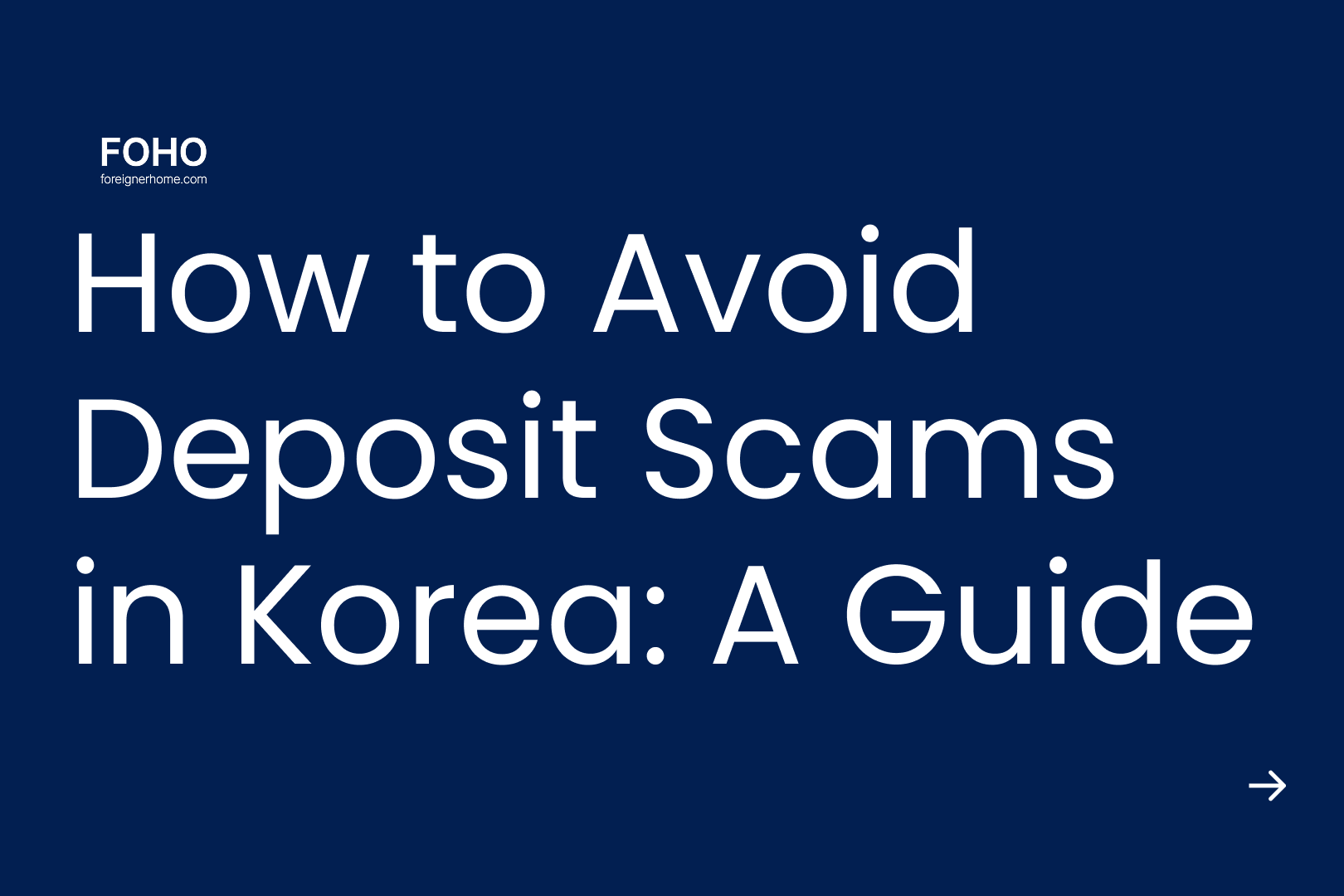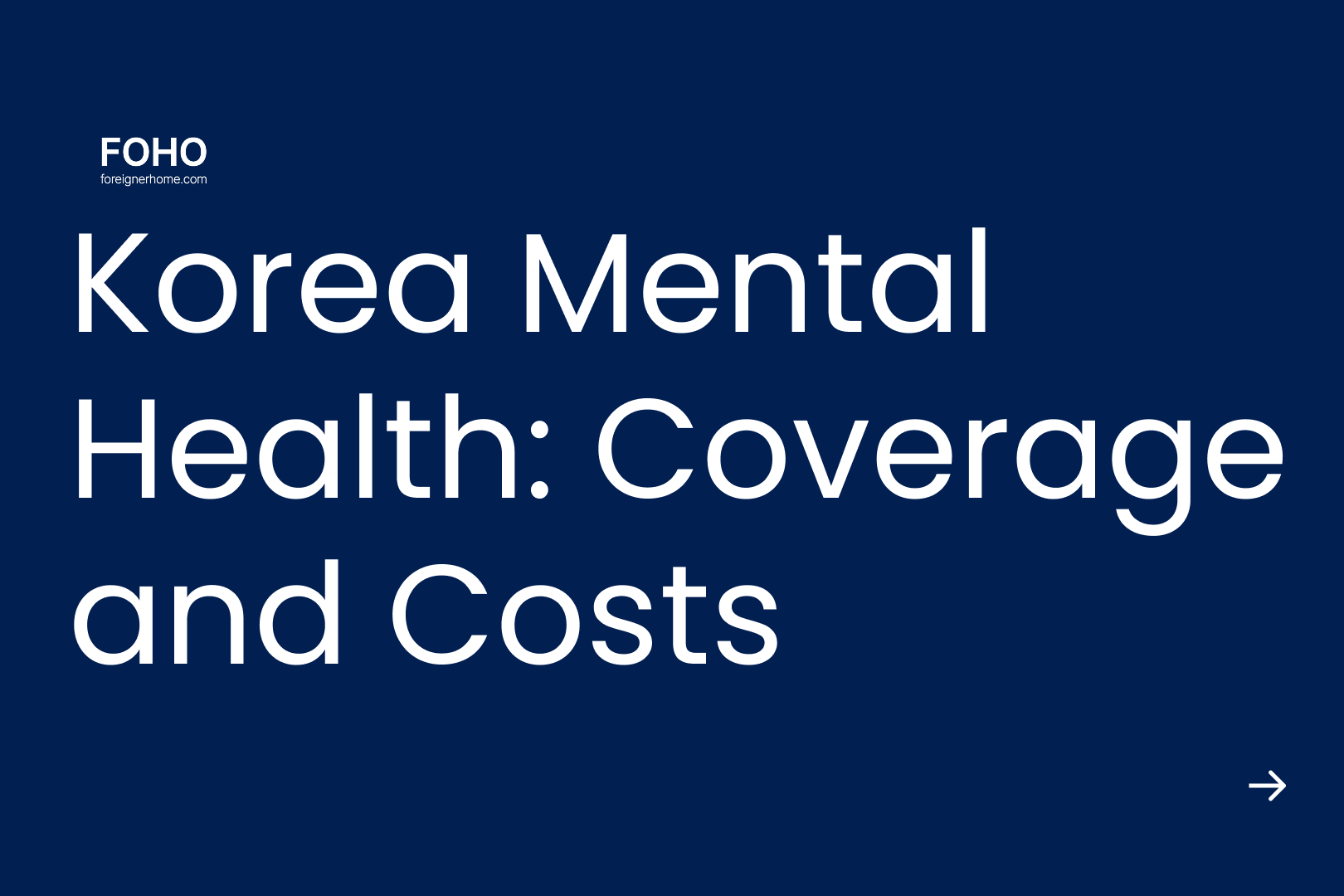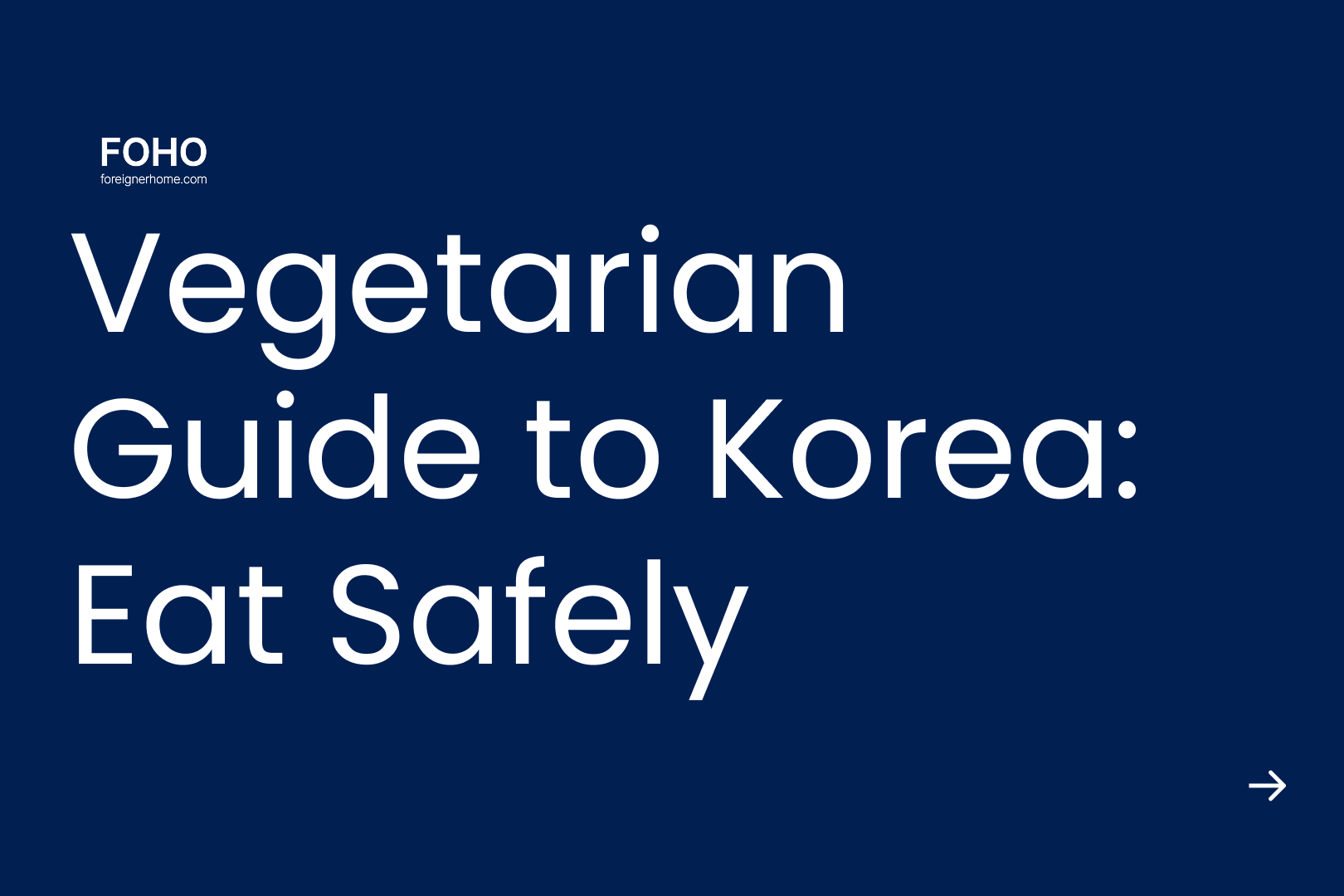FOHO Blog – Global Housing & Living Guide for Foreigners
How to Convert E-9 Visa to E-7-4 in Korea
A guide for Vietnamese & Chinese E-9 workers in Korea. Learn the E-7-4 visa points system, F-2 requirements, and compare GME vs. Sentbe for remittance.

Table of contents
- 01A Practical Guide for Vietnamese and Chinese Nationals in Korea: From E-9 Visa to Long-Term Residency
- •Section 1: The Long-Term Strategy: Your Path from E-9 to F-2
- •Section 2: Step 1: Converting Your E-9 Visa to an E-7-4 (Skilled Worker)
- •Section 3: Step 2: The Path to Residency (F-2 Visa)
- •Section 4: Managing Your Money: Sending Funds to Vietnam and China
- •Section 5: Finding Your Community in Korea
- •Section 6: Essential Toolkit for Life in Korea
- •Glossary of Key Korean Terms
- •FOHO Makes Finding Your Home in Korea Simpler
A Practical Guide for Vietnamese and Chinese Nationals in Korea: From E-9 Visa to Long-Term Residency
Section 1: The Long-Term Strategy: Your Path from E-9 to F-2
- Proven Skills: Your value to a Korean company.
- Stable Employment: Staying at one job for a long time is a major plus.
- Financial Stability: Proving you can support yourself.
- Social Integration: Your Korean language ability is the most important factor.
- Step 1: Convert your E-9 visa to an E-7-4 (Skilled Worker) visa.
- Step 2: After several years on an E-7-4, apply for an F-2-99 (Resident) visa.
Section 2: Step 1: Converting Your E-9 Visa to an E-7-4 (Skilled Worker)
Core Eligibility Requirements
- Work Experience: You must have worked legally in Korea for at least four to five years within the last ten years on a valid E-9, E-10, or H-2 visa.
- Current Employment: You must have a current employment contract for at least two years with an annual salary of 26 million KRW or more (approx. $20,000 USD).
- Exception: 25 million KRW for those in agriculture, livestock, or fishery sectors.
- Employer Recommendation: You must have a formal, written recommendation from your current employer.
Disqualification Criteria
- A criminal record in Korea.
- Unpaid national or local taxes.
- Violated the Immigration Act more than four times.
The E-7-4 Points System (300-Point Scale)
Category | Sub-Category | Points | Max Points |
Basic Items (Min. 50 pts each) | Average Annual Income (last 2 years) | ㅤ | 120 |
ㅤ | 50 million KRW or more | 120 | ㅤ |
ㅤ | 35 million KRW or more | 80 | ㅤ |
ㅤ | 25 million KRW or more | 50 | ㅤ |
ㅤ | Korean Language Ability (TOPIK or KIIP) | ㅤ | 120 |
ㅤ | TOPIK Level 4+ / KIIP Level 4+ | 120 | ㅤ |
ㅤ | TOPIK Level 3 / KIIP Level 3 | 80 | ㅤ |
ㅤ | TOPIK Level 2 / KIIP Level 2 | 50 | ㅤ |
ㅤ | Age | ㅤ | 60 |
ㅤ | 27 - 33 years | 60 | ㅤ |
ㅤ | 19 - 26 years | 40 | ㅤ |
ㅤ | 34 - 40 years | 30 | ㅤ |
ㅤ | 41 years or more | 10 | ㅤ |
Additional Points | Employer Recommendation | 50 | 50 |
ㅤ | Government Recommendation (Central or Local) | 30 | 30 |
ㅤ | Work Experience | ㅤ | 40 |
ㅤ | Over 3 years at current workplace | 20 | ㅤ |
ㅤ | Over 3 years in population-decreasing regions | 20 | ㅤ |
ㅤ | Certifications & Education | ㅤ | 40 |
ㅤ | Domestic Technical Certificate | 20 | ㅤ |
ㅤ | Domestic University Degree (Associate+) | 20 | ㅤ |
ㅤ | Other (e.g., Domestic Driver's License) | 10 | 10 |
Deduction Items | Immigration Act Violations (1-3 times) | -5 to -15 | -15 |
ㅤ | Payment Arrears (utilities, etc.) | -5 to -15 | -15 |
ㅤ | Fines (less than 1 million KRW) | -5 to -20 | -20 |
Source: Based on official E-7-4 criteria published by the Korean Ministry of Justice / HiKorea. | ㅤ | ㅤ | ㅤ |
Application Strategy and Document Checklist
- Integrated Application Form
- Passport and Alien Registration Card (ARC)
- Standard-sized color photo
- Score-based Skilled Worker Evaluation Form (your self-assessment)
- Income Amount Certificate (소득금액증명) for the last 2 years (from the tax office)
- Proof of Korean Language (TOPIK report or KIIP certificate)
- Any other documents to prove your points (degree, driver's license, etc.)
- Copy of Business Registration Certificate (사업자등록증)
- Company's Tax Payment Certificates (national and local)
- List of Insured Persons for Employment Insurance (to verify Korean employee count)
- Standard Employment Contract (for E-7-4, stating 2+ years and 26M+ KRW salary)
- Letter of Recommendation from Employer (고용추천서)
- Statement of Reason for Employment (고용사유서)
- Guarantee of Identity (신원보증서)
Section 3: Step 2: The Path to Residency (F-2 Visa)
The Critical Rule: No Direct E-9 to F-2
The Primary Pathway: E-7-4 to F-2-99 (Long-Term Resident)
- Residency Requirement: You must have lived in Korea for five continuous years after getting your E-7-4 visa. The 5-year clock starts on the day your E-7-4 status is approved.
- Financial Stability: You must meet both asset and income requirements.
- If Staying Alone:
- Assets: 15 million KRW or more (approx. $11,500 USD)
- Income: Annual income must be 18 times the monthly minimum wage (approx. 32.8 million KRW, or $25,200 USD, but this changes annually).
- If Staying with Family:
- Assets: 30 million KRW or more (approx. $23,000 USD)
- Income: Annual income must be 1.5 times the previous year's Gross National Income (GNI) per capita (approx. 56.1 million KRW, or $43,150 USD, but this changes annually).
- Basic Literacy Requirement: You must prove your understanding of Korean society by meeting one of these:
- Graduate from a Korean school (elementary to university).
- Complete Level 4 or higher of the Korea Immigration and Integration Program (KIIP). (This is the most common and recommended way).
- Score 81+ points on the KIIP pre-evaluation test.
- Good Conduct: You must have a clean legal record with no serious violations.
For Your Information: The F-2-7 (Points-Based) Visa
Section 4: Managing Your Money: Sending Funds to Vietnam and China
Comparison of Popular Remittance Apps
App | Target Countries | Fees | Transfer Speed | Receiving Options |
Sentbe | Vietnam, China, 50+ others | Low fees (e.g., 2,500 KRW). Claims 95-97% cheaper than banks. (Source: Sentbe) | 5 min - 24 hours | Bank Deposit, Cash Pickup, ATM, Visa Card |
GME Remit | Vietnam, China, 200+ others | Claims 90% lower than banks. First transfer often free. (Source: GME Remit) | 5 min | Bank Deposit, Cash Pickup. (To Vietnam: MOMO, ZaloPay, Home Delivery) |
Hanpass | Vietnam, China, 200+ others | Often a flat fee (e.g., 5,000 KRW). (Source: Hanpass) | "Real-time" | Bank Deposit, Cash Pickup, Mobile Wallet |
WireBarley | Vietnam, China, 45+ others | Low or zero fees. (Source: WireBarley) | Varies, can be fast | Bank Deposit, Cash Pickup. (Alipay for China) |
Remitly | Vietnam, China, 170+ others | Variable fees (Economy vs. Express). Promotional rates for new users. (Source: Remitly) | Express: Minutes. Economy: 3-5 days. | Bank Deposit, Cash Pickup, Mobile Wallet |
How to Register for a Remittance App
- Download the App: Get the app from the Google Play or Apple App Store.
- Create an Account: Sign up with your email and password.
- Identity Verification (KYC): This is the most important step. You must upload clear photos of:
- Your valid Passport
- Your valid Alien Registration Card (ARC)
- Bank Account Verification: Link the Korean bank account that is in your name. The app will send 1 KRW to your account with a 4-digit code in the transaction description. You must enter this code in the app to prove you own the account.
Section 5: Finding Your Community in Korea
Hubs for the Vietnamese Community
- Seoul (Itaewon): "Quy Nhon Street" in Yongsan-gu is an official "Little Vietnam" with Vietnamese restaurants (like Plus 84) and cafes (like Cong Caphe).
- Seoul (Wangsimni): This area in Seongdong-gu is an informal "Vietnamese town" with many authentic restaurants and food marts.
- Ansan (Wongok-dong): Known as the "Borderless Village," Ansan has a large multicultural population, including a significant Vietnamese community. The city's Foreign Resident Center provides excellent support.
- Religious Centers:
- Yoido Full Gospel Church (Seoul): Offers service interpretation in 10 languages, including Vietnamese.
- NLF Vietnam Church (Seoul): Offers services in Vietnamese and English.
Hubs for the Chinese Community
- Seoul (Daerim-dong): Located in Yeongdeungpo-gu, this is Seoul's largest and most authentic, though unofficial, Chinatown. The area around Daerim Station (Exit 12) is filled with restaurants (lamb skewers, hot pot), grocery stores, and street food. Mandarin is widely spoken.
- Seoul (Myeong-dong): A smaller, historic "Little China Town" is located near the Chinese Embassy and the Seoul Overseas Chinese School.
- Incheon (Official Chinatown): This is a major cultural and tourist destination. It features a traditional Chinese gate (Paifang), Uiseondang Temple, the Korea-China Cultural Center, and the Jajangmyeon Museum.
- Religious Centers (Seoul):
- Seoul Chinese Christian Church: Located in Jung-gu.
- Yeongdeungpo Chinese Christian Church: Located in Yeongdeungpo-gu.
- Onnuri Church: Offers a Chinese language service at its Seobinggo campus (Yongsan-gu).
Section 6: Essential Toolkit for Life in Korea
1. The Korea Immigration and Integration Program (KIIP)
- What it is: A free, government-run program to teach Korean language and culture.
- Why it is essential:
- Gives you a huge number of points for the E-7-4 visa.
- Completing Level 4 fulfills the entire literacy requirement for the F-2-99 visa.
- Completing Level 5 can give you benefits if you ever apply for naturalization (citizenship).
- How to enroll: Register on the Social Integration Network website (www.socinet.go.kr) and take a level test.
2. Official Government Helplines
- Immigration Contact Center (Dial 1345): This is your main number for all visa and immigration questions. They provide expert counseling in over 20 languages, including Vietnamese and Chinese. (Weekdays, 9:00 AM - 10:00 PM).
- Danuri Helpline (Dial 1577-1366): This is a 24/7 call center for multicultural families and immigrant women. They provide counseling for family issues, emergency help, and 3-way interpretation with hospitals or police. (Available in Vietnamese and Chinese).
3. Key Websites and Services
- HiKorea Portal (www.hikorea.go.kr): The official e-government website for foreigners. You can use it to reserve immigration visits, apply for visa extensions, and check your application status. (Available in English and Chinese).
- National Health Insurance Service (NHIS): Health insurance is mandatory for all foreigners staying over six months. You must enroll. This gives you access to high-quality, affordable healthcare.
4. Practical Tasks
- Opening a Bank Account: You need your ARC (Alien Registration Card) to open a full-service bank account. Major banks like KEB Hana Bank, KB Kookmin, Shinhan, and Woori are foreigner-friendly. KEB Hana Bank offers dedicated support in Vietnamese and Chinese.
- Getting a Korean Driver's License: You can either exchange your home country's license (if it's from an "acknowledged country") or apply for a new one by taking the safety course, written test (available in English), and driving tests.
5. Support Centers
- Seoul Global Center (SGC): Located in Jongno-gu, this center offers legal and labor counseling, settlement support, and employment help in multiple languages.
- Seoul Foreign Resident Center: Located in Yeongdeungpo-gu (near Daerim-dong), this center provides counseling, Korean classes, and cultural activities.
- Multicultural Family Support Centers (Nationwide): A network of local centers (231 in total) providing support for marriage immigrants and their families. Call 1577-1366 to find your local center.
Glossary of Key Korean Terms
- ARC (Alien Registration Card): Your official foreigner ID card in Korea. You must carry it with you.
- E-9 (Non-Professional Employment): A visa for temporary, non-professional work in specific industries.
- E-7-4 (Skilled Worker): A points-based visa for skilled workers, serving as a bridge from E-9 to F-2.
- F-2 (Resident): A category of long-term residency visas that grants more freedom.
- HiKorea: The official online portal for the Korean Immigration Service.
- KIIP (Korea Immigration and Integration Program): A free government program for language and culture. It is essential for changing your visa.
- KRW (Korean Won): The official currency of South Korea.
FOHO Makes Finding Your Home in Korea Simpler
Settle in faster with FOHO
Browse more verified listings and message landlords in minutes. Lock in your lease with FOHO's secure payments.
Get Foreigner-Friendly Housing Tips
Get the latest news delivered to your inbox.

Oct 30, 2025
How to Avoid Deposit Scams in Korea: A Guide
Avoid deposit scams in Korea with our step-by-step guide. Learn to check property debt, understand the 'Deung-gibu,' and secure your deposit.

Oct 29, 2025
Korea Mental Health: NHIS Coverage and Costs
Get help with mental health in Korea. This guide for foreigners explains how to use NHIS, find low-cost options, and get medication prescriptions locally.

Oct 28, 2025
How to Find Community in Korea as a Foreigner
This guide for expats explains how to make friends in Korea. Learn the pros and cons of Meetup, local clubs, and apps like Somoim.

Oct 27, 2025
Vegan & Vegetarian Guide to Korea: Eat Safely
Eating on a specialized diet in Korea is hard. Learn how to avoid hidden fish sauce or wheat and find certified vegan, Halal, or GF food with our guide.
Subscribe to the FOHO newsletter
Actionable housing insights in your inbox.